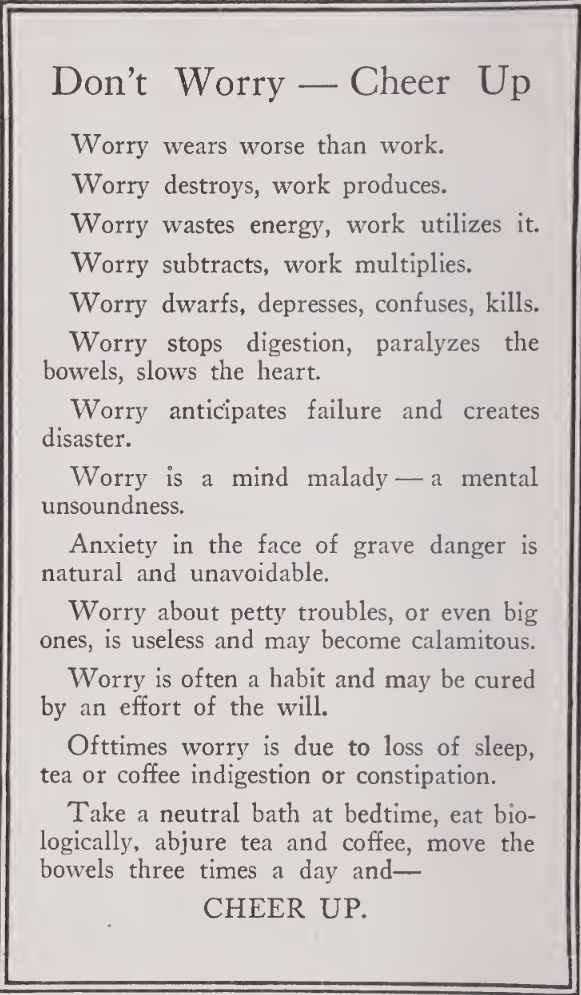Like physiological health, mental health is an ideal, and its nonmedical cultural environment shapes it deeply. Victorian ideas about women’s place in the Cult of Domesticity, for example, structured mental wellbeing around how well they fit into that mold. The general cultural unfitness of a mental patient stigmatized mental health, which has remained today. There is gradual work to remove this stigma, but it nonetheless remains. In fact, despite great medical change around the treatment of mental illness, like the development of the “talking cure” in contrast to the rest cure or opiates, popular treatment of mental illnesses remains similar to 19th century beliefs. They are seen as signs of weakness or essential deformity of the person.

Mental health is not fundamentally different from physiological health, and it often derives from physiological issues itself, like addiction. And exaggerated in mental health diagnoses and attitudes toward ill people is discrimination, especially racially. Black people, paralleling their general medical undertreatment, remain undiagnosed or misdiagnosed for mental illness more often than white people, and American culture, at least, is much more likely to sympathise with white mentally ill people than black mentally ill people. “The odds that white shooters will receive the mental illness frame are roughly 19 times greater than the odds for black shooters,” one study reports.
Mental illness is often characterized differently by authors depending on their intent. In Doyle’s The Sign of Four, for example, Holmes is treated as ever-curious and having a very active mind because of his addiction to cocaine. Nineteenth century doctors treated male neurasthenics as hardy with strong work ethic rather than stigmatizing their disease. But nineteenth century doctors, in medical journals discussed in Washington’s Medical Apartheid, sought to discredit black people and assigned them the moniker of madness.
